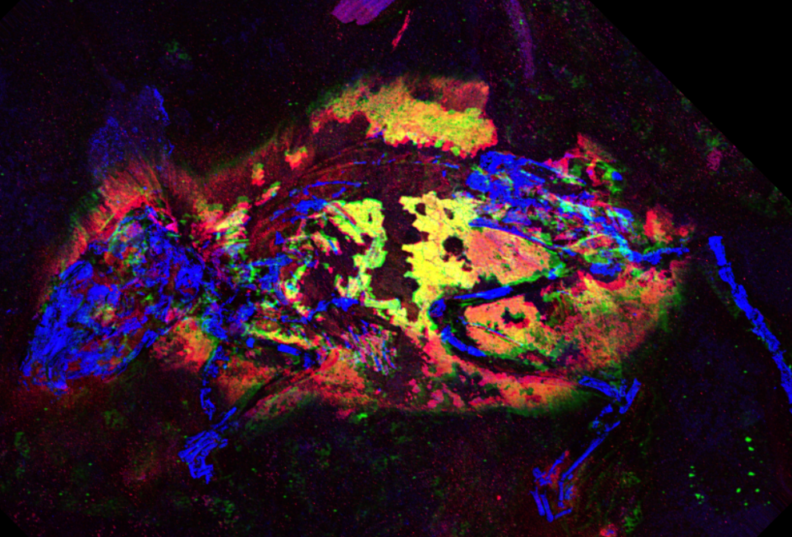Three Million-Year-Old Fossilized Mouse Holds the Secrets of Animal Color Evolution

Almost everywhere you look, you see colors, from animals to objects. Colors have played an essential role in life’s evolution on Earth, and a role in the natural selection. Regarding animal, the color is found starting with the red foxes to the zebras. Researchers from the University of Manchester have published a study that is revealing the history of the color, way back to a fossilized mouse from three million years ago.
The study’s name is ‘Pheomelanin pigment remnants mapped in fossils of an extinct mammal’ and was published in the Nature Communications Journal. The research offers a better understanding of the definition of color pigments for the long-extinct species. The analyze was made with the help of an X-ray imaging applied to the old fossil for helping the scientist to untangle the story of pigments in the animals that lived many million years ago.
The idea is to recognize the chemical signatures of some specific pigments that have evolved in the extinct animals.
Three Million-Year-Old Fossilized Mouse Holds the Secrets of Animal Color Evolution
Moreover, Professor Phil Manning is the lead paleontologist of the study and is saying that by analyzing the fossils they could discover many secrets of the antic organism by reconstructing the life, the death, and other events that had impact the preservation of the fossil. But that wasn’t a simple task they had in hands. An interdisciplinary team was selected to combine the efforts of solving the mystery. Combinations of physics, paleontology, organic chemistry and geochemistry have been used for the work.
Also, the team has discovered the red pigment and traces of black pigment. The black pigment was extracted from a well preserved soft tissue, and the red pigment is characteristic to some animals, such as foxes, and it’s tough to detect. So using the Diamond Light Source and the Stanford Synchrotron Radiation Lightsource with intense X-rays, they have recognized the chemistry of the red pigment.
Finally, the scientists have found that traces of metals in the three million year mouse have bonded with the organic pigments in the animal. The results were analyzed with synchrotron radiation and by pigment chemistry specialists.
0 comments